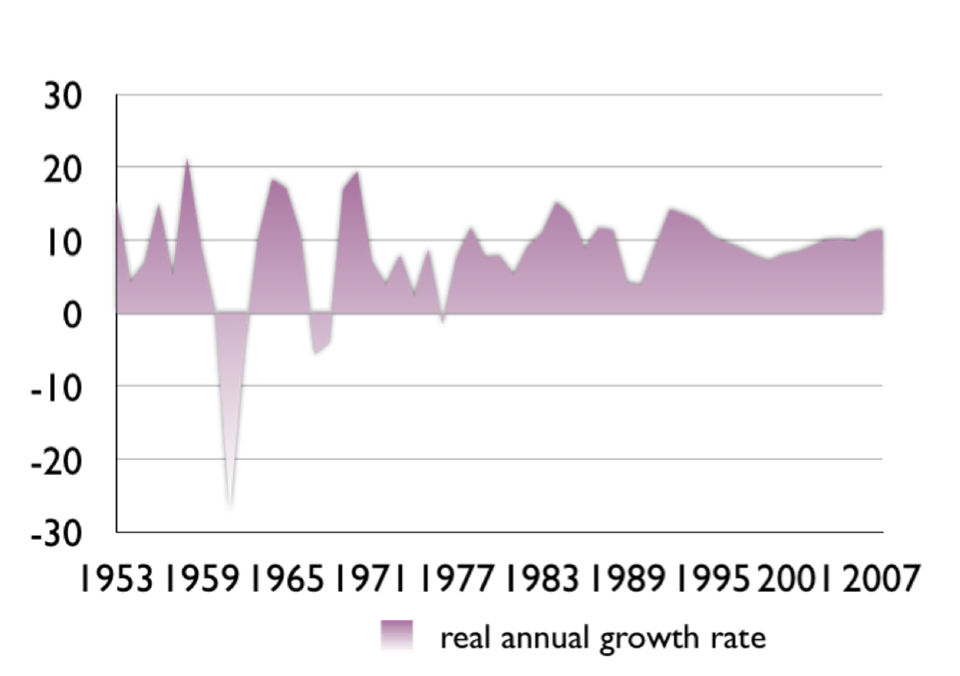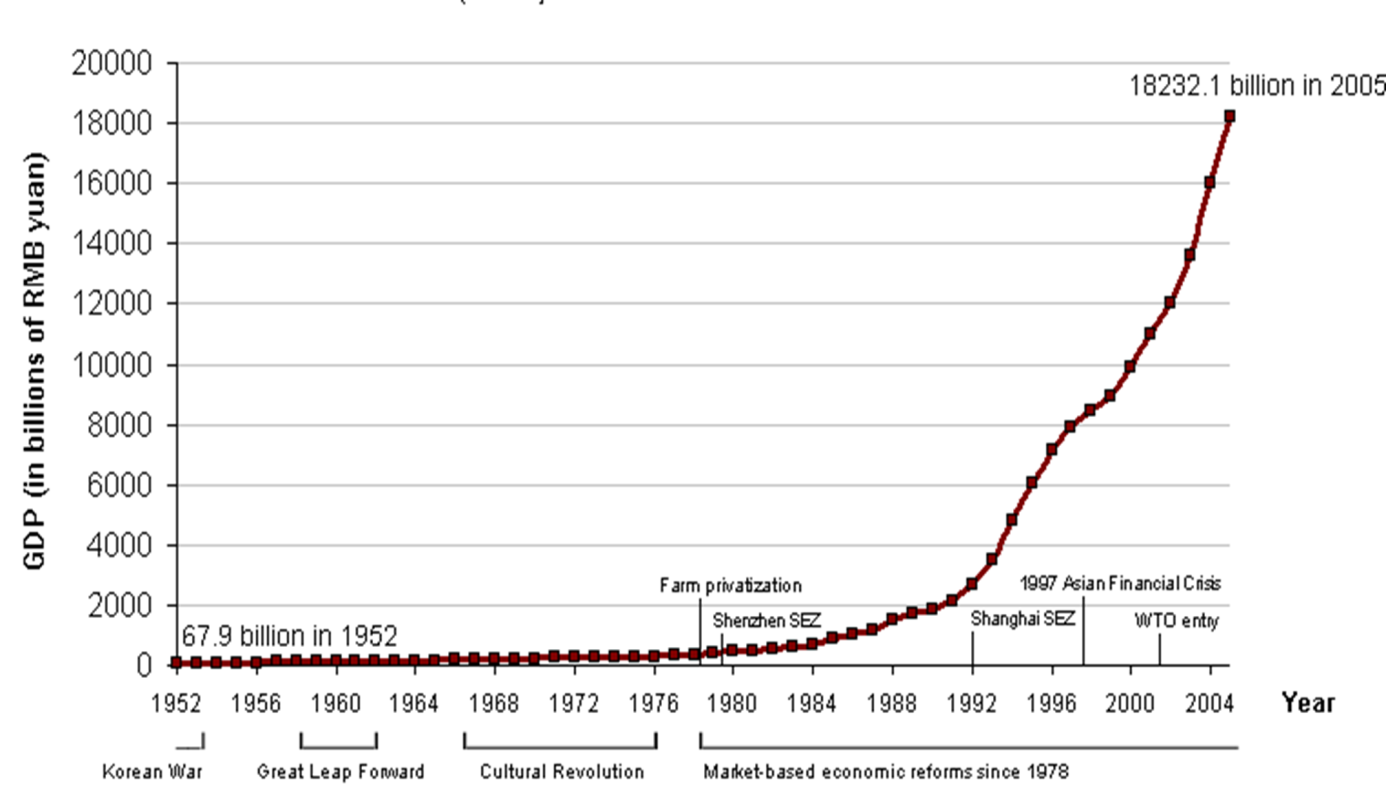
China as the most attractive country for fdi.
The Chinese is one of the oldest civilization - extends backwards in history in an unbroken chain over nearly four thousand years.
It used to be one of the top powers for centuries, even though it was separated from the world

China under Mao Zedong
1949 - announced establishment of People’s Republic of China.
Same principle as in USSR: take away from richer, give it to the poorer. Hence wealthier landlords were forced to give away their land to poorer peasants.
By 1958 private ownership was entirely abolished and all the land was state-owned.
Mao saw grain and steel production as the key pillars of economic development. He forecast that within 15 years of the start of the Great Leap, China's steel production would surpass that of the UK.
The Great Leap
Shift of labour force from agriculture to industrial sector accompanied by poor weather conditions and harsh treatment by governmental authorities led to severe famine.
Number of deaths during that period is roughly 42 million people (latest estimate)
During the Great Leap, the Chinese economy initially grew. Iron production increased 45% in 1958 and a combined 30% over the next two years, but plummeted in 1961, and did not reach the previous 1958 level until 1964
led to the greatest destruction of real estate in human history, outstripping any of the bombing campaigns from World War II.Approximately 30 to 40 per cent of all houses were turned to rubble
Chinese economy during the cultural revolution directed by Mao completely destroyed economy reaching the level of 2% of the world GDP.

Recovery of the economy. Deng’s reforms 1978-84
Agriculture:decollectivizing agriculture and emphasizing the Household-responsibility system, which divided the land of the People's communes into private plots
Private businesses were allowed to operate
Country was opened to foreign investment. Deng created a series of special economic zones for foreign investment that were relatively free of the bureaucratic regulations and interventions that hampered economic growth. These regions became engines of growth for the national economy
1984-93
Further decentralisation of state control over private sector
Private sector surpassed hugely inefficient state sector in mid-90s
Also various reforms were done in banking system and trade policies that resulted in China joining WTO at the beginning of 21 century
Rates of growth since Deng and how it translates into nominal GDP

Throughout the reform period, the government reduced tariffs and other trade barriers, with the overall tariff rate falling from 56% to 15%. By 2001, less than 40% of imports were subject to tariffs and only 9 percent of import were subject to licensing and import quotas.
Trade has increased from under 10% of GDP to 64% of GDP over the same period.
Special Economic Zones (SEZs) were created in the early 1980s to attract foreign capital by exempting them from taxes and regulations. This experiment was successful and SEZs were expanded to cover the whole Chinese coast
Driving forces of China’s growth
Capital accumulation
Export orientation
Manufacturing concentration
Features of China’s trade
Extraordinary growth (10% GDP annual growth for the past 10 years; share in the world trade from 1% in 1980 to 9.7% in 2010)
Change in factor intensity of exports (from labour-intensive to technology-intensive )
Why FDI inflows are so great in China?
After Deng’s reforms FDI inflows combined with unskilled low-wage labour made it ‘factory of the world’
Still China is most popular for offshoring production of manufactured goods.
Apart from obvious benefits of high FDI inflows to China (eg growing exports, hence growing GDP), allowing foreign firms privileged access to China’s market in exchange for technology sharing!
“Made in China” vs “Made by Chinese”
Shift towards production of high-tech goods. This led to:
1) Increased demand for education
2) It still imports most sophisticated components – Transfer of know-how comes from FDI and joint ventures with foreign partners. These skills are not yet possessed by domestic producers
2) However, 85-90% of those products are not their own. China is still being treated as an ‘assembly line’
Changing the picture
